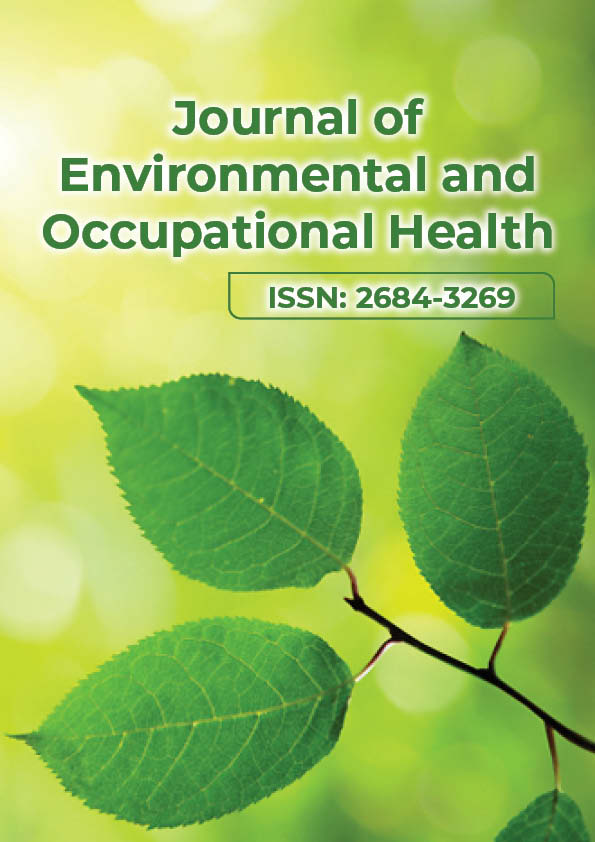Perspective - Journal of Environmental and Occupational Health (2023)
Definitive causes and effects of Ocean Pollution
Lei Yang*Lei Yang, Department of Healthcare Management, Sanda University, Shanghai, China, Email: yang125@gmail.com
Received: 20-Mar-2023, Manuscript No. JENVOH-23-93813; Editor assigned: 22-Mar-2023, Pre QC No. JENVOH-23-93813 (PQ); Reviewed: 07-Apr-2023, QC No. JENVOH-23-93813; Revised: 14-Apr-2023, Manuscript No. JENVOH-23-93813 (R); Published: 21-Apr-2023
Description
The term “ocean pollution” also applies to marine contamination. The world’s oceans are the biggest bodies of water. The marine life in the world’s waters has been impacted by human activity for a few millennia. Oil, plastic, industrial and agricultural waste, and chemical particles are some of the dangerous chemicals that are being transported into the ocean through marine pollution [1]. Land-based activities contribute about 80% of marine pollution. The majority of the pollution people generate on land, including pesticides and plastic bags, eventually makes its way to the seas, either by dusting or through leaks in rivers and sewers [2].
Causes of ocean pollution
Oil spills: Although while oil spills inflict enormous harm to the marine ecosystem, they are only to blame for around 12% of the oil that enters the waters annually. A study by the US National Research Council found that 36% of the garbage that enters rivers and drains comes from towns and industry)
Fertilizers: For coastal communities, fertilizer runoff from lawns and farms is a major issue. Eutrophication, or the thriving of algal blooms that deplete the water’s dissolved oxygen and smother other marine life, can be brought on by the excess nutrients).
• The behaviour, reproduction, and growth of marine life living creatures can be destroyed by toxic metals in the soil. Oil, garbage, and solid wastes are not the only things that pollute the ocean.
• Nuclear reactor radioactive waste, industrial wastes such heavy metals, acids, and drained sewage is all significant contributors to pollution[3].
• Plastic waste pollutes the soil, which produces more carbon dioxide and harms plant life. Other biological systems, such as animals, fisheries, vertebrates, sponges, and others, are also at risk of extinction [4].
• The pollutants are also introduced into the water by operations carried out on land. Plankton, which is tiny organisms at the base of the food chain, take in the toxins as they eat while swimming in the waters [5].
• Excessive nutrients from agricultural runoff and sewage outfalls contribute to low oxygen areas known as dead zones, where the majority of marine life cannot survive, leading to the collapse of certain ecosystems. Pesticides also have a direct impact on the food chain [6].
• The majority of the plastic in the ocean comes from terrestrial sources. Metallic elements have a high density and are dangerous or deadly even in small amounts. Mercury, lead, nickel, arsenic, etc. are some examples.
• The pollutants are also introduced into the water by operations carried out on land. Plankton, which are tiny organisms at the base of the food chain, take in the toxins as they eat while swimming in the waters.
Oceans make up around 70% of the surface of the world and are crucial to maintaining the chemical and biological balance of life. They are abundant in marine resources including minerals, oils, and marine life, and the availability of sea food satisfies the needs of the entire world’s population.When humans use these resources; they may suffer negative effects if marine life is polluted and has contaminants stored in its biomass. In conclusion, ocean pollution is a significant problem that requires urgent action. The negative impacts of pollution on marine life, human health, and coastal communities cannot be ignored. By taking a collaborative and proactive approach, we can work towards a cleaner and healthier future of the oceans.
References
- Bata MH, Carriveau R, Ting DS. Urban water supply systems' resilience under earthquake scenario. Sci Rep 2022;12.
[Crossref] [Google scholar] [Pubmed]
- Bowd EJ, Banks SC, Bissett A, May TW, Lindenmayer DB. Disturbance alters the forest soil microbiome. Mol Ecol 2022;31:419-447.
[Crossref] [Google scholar] [PubMed]
- Shoyama K, Cui Q, Hanashima M, Sano H, Usuda Y. Emergency flood detection using multiple information sources: Integrated analysis of natural hazard monitoring and social media data. Sci Total Environ 2021;1.
[Crossref] [Google scholar] [Pubmed]
- Betts MG, Yang Z, Hadley AS, Smith AC, Rousseau JS, Northrup JM, et al. Forest degradation drives widespread avian habitat and population declines. Nat Ecol Evol 2022;6:709-719.
[Crossref] [Google scholar] [PubMed]
- Wang N, Hou J, Du Y, Jing H, Wang T, Xia J, et al. A dynamic, convenient and accurate method for assessing the flood risk of people and vehicle. Sci Total Environ 2021;25.
[Crossref] [Google scholar] [Pubmed]
- Kubicz J, Lochyński P, Pawełczyk A, Karczewski M. Effects of drought on environmental health risk posed by groundwater contamination. Chemosphere 2021;263:128144.
[Crossref] [Google scholar] [Pubmed]
Copyright: © 2023 The Authors. This is an open access article under the terms of the Creative Commons Attribution Non Commercial Share Alike 4.0 (https://creativecommons.org/licenses/by-nc-sa/4.0/). This is an open access article distributed under the terms of the Creative Commons Attribution License, which permits unrestricted use, distribution, and reproduction in any medium, provided the original work is properly cited.





